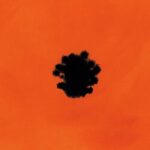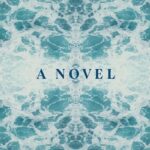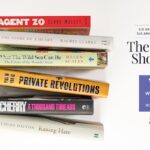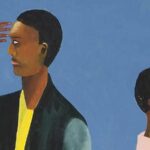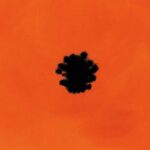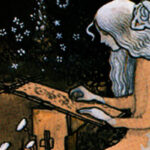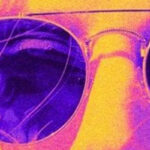First-Person Stories of the Body Are Much More Than Clickbait
In Praise of Narrative Medicine
“There’s a certain kind of personal essay that, for a long time, everyone seemed to hate,” Jia Tolentino wrote in the New Yorker this May. She meant a species of quick, cheap web essays designed to hash out timely topics through personal testimony. The style, which flourished a few years ago, has often drawn pageviews for what Tolentino calls “one-off body-horror pieces,” an article by a woman so blitzed on painkillers she left a tampon inside herself for ten days, for example; another piece involving an unkempt woman whose gynecologist found a ball of cat hair inside her private parts.
It’s unsurprising that a genre notorious for bizarre acts of self-exposure drew public attention—and even less surprising when the whole trend shifted from viral to gangrenous to nearly amputated from the public consciousness within the past year or so. But when Tolentino rang personal narrative’s death knell this spring, I thought of a more obscure but far more dignified arena where personal narratives are thriving—despite offering up a constant stream of bracing stories about the human body.
*
A few years back, some industrial chefs realized that the same ultrasound machine jewelers use to clean silver and gold can also be used to shake the outermost layer of a raw French fry into a sleeve of bubbly, fuzzy starch. This creates a fry that, when cooked, will have an extra-crispy outside and a soft, mushy inside. The difference from any other kind of fry is slight, but, much like a certain kind of personal essay, sonicated French fries have been everywhere lately.
I relate to these things. They remind me of me.
A few years back, a disease called Ménière’s struck my ear. The disorder involves the bones of the inner ear becoming misshapen. This causes fluid in the ear’s inner chambers to thicken, distorting passing noises and, eventually, making the brain maladapt to the errant sounds. For the sick person, the upshot is dizziness, nausea, and, in my case, intermittent bouts of raw hypersensitivity to noise. One spring, every shuffling foot and cackling laugh suddenly became foghorn-loud and sharply painful. It has stayed that way, world on blast, for most of the time since. Sometimes noises hurt so much that I feel—well, not burnt out exactly—but crispy, as though an outer layer of my mind has been shaken into frazzled distraction. On occasion, overwhelming sensation renders me silent and indecisive, thinking mind reduced to inert mush. Like a potato harassed to pieces, I’m sonicated by the sounds that bother no one else.
My illness has meant more than a weird congruence with root vegetables. It’s also pointed out places where first-person narratives of the body can work as more than clickbait; it’s illustrated the importance of something called narrative medicine.
Narrative medicine is a medical angle on literature that has been used to improve doctoring for about two decades now. Driven by the belief that most people view their own experiences as stories, practitioners of narrative medicine train clinicians to focus on the stories that they and their patients have to share. The field is part literary genre, part clinical approach, and the main idea is that close reading and creative writing can help doctors listen closely, empathize, and offer effective care to patients. Although it’s imbued with ambitions unrelated to the mass-marketing of books, a few bestsellers could be labeled narrative medicine. In certain circles, it has become quite popular.
My right eardrum is one of those circles. I remember going to a clinic when Ménière’s disease first struck and reporting then-unbearable pain—and watching the resident murmur, swish her blonde ponytail as though to brush aside my faux pas, and abruptly leave the room. The abandonment hurt as much as if she’d slapped me in my aching head; the impact was barely figurative, since it meant I’d have no relief from nerve-splintering pain. It also clarified my viewpoint: if literature could replace such casual negligence with empathy, then we should have literature everywhere, immediately and always.
But getting solid medical advice hadn’t been the whole point, though. Rather, I’d wanted a chance to articulate the weirdness of my condition: the way pain didn’t hurt so much as stun me; the way it began as an itch in my ear canal at noon and then spread from ear to skull to jaw and into my mind by nightfall, turning my neocortex to a hot white nothing. I wanted to say it hurt like burning oil, that my life was being shaken to pieces.
“Medicine requires some complement to touch meaning, beauty, fear, and so on—and medical education, as it stands, tends to offer doctors little more than training in how to ignore it all.”
And I wanted to say I was entranced. By the time I was at that doctor, Ménière’s disease had reordered my sory world. One day, I’d put on music at the lowest volume, hoping to take comfort in its well-ordered murmur, and had found myself weeping suddenly at the beauty in a song. The more I listened, the more I understood some fundamental shift had occurred. I’d always liked music—everyone likes music—but for the first time, sound could offer all-consuming pleasure. Suddenly, I understood why people could devote their lives to something as simple as the bass, why a sample could become a personal quest, how the right drum break could make me shiver. I realized that I was intractably ill until I got absorbed in a song—but then I was arguably better than I’d ever been.
This was dazzling and flummoxing; it was like being colorblind from birth and watching the world suddenly flash with reds and greens. In my inexpert reasoning, I figured my body had learned to protect me by releasing waves of dopamine, a neurochemical of pain relief—and had potentiated immense pleasure, since the dopamine molecule is associated with that, too. But I couldn’t find mention of anything like it in textbooks or research, and I thought I must’ve misunderstood what was happening. It also seemed clear I might be facing a devil’s bargain, in that aural bliss might depend on unlivable, nauseating sickness.
That was why I needed a doctor: to relieve pain, and preserve beauty, and explain the mystery of musical pleasure.
I imagine my doctor could have understood only if she’d let me tell the whole breathless story. It would’ve helped, too, if she knew how to dig a clear narrative out of the tangled, stuttered recounting that my overwhelmed senses then allowed me to give.
Lots of people have a story that needs hearing, of course. The existence of an entire literary sub-genre about health helps explains why so much of the personal-narrative boom involved weird stories about body parts. Most people get diseases, or, at minimum, exist close to the body’s fascinating weirdness. And many diseases reorder a person’s world—often more profoundly than my right ear did to mine.
This is kind of a problem for clinical medicine. Paul Kalanithi’s When Breath Becomes Air, written while its 37-year-old neurosurgeon-author was dying of cancer, points out that medicine alone can’t handle the life-changing, mind-opening aspects of illness. He described science as “predicated on its inability to grasp the most central aspects of human life: hope, fear, love, hate, beauty, envy, honor, weakness, striving, suffering, virtue.” Echoing Kalanithi, Rita Charon, co-founder of Columbia University’s Program in Narrative Medicine, has written, “Scientifically competent medicine alone cannot help a patient grapple with the loss of health or find meaning in suffering.” Medicine requires some complement to touch meaning, beauty, fear, and so on—and medical education, as it stands, tends to offer doctors little more than training in how to ignore it all. In some ways, in fact, medicine’s constant development is making it less capable at handling human complexity.
*
Forty-five years ago, the philosophers Gilles Deleuze and Felix Guattari articulated the difference between two modes of thought. On the one hand, there are systems that function on the assumption that there exists just one correct approach to any problem, and that approach can be shared in some top-down fashion, unchanging and unquestioned. In Deleuze and Guattari’s terminology, these are arborescent systems: massive, singular structures that spring from identical, faithfully replicated seeds, as trees do.
On the other hand, there are situations that allow a multiplicity of perspectives and assume that no one viewpoint captures the whole. These systems of thought mimic the structure of plants, like ginger and lotus root, that grow thick branching stems (called rhizomes) underground without seeds or central trunks. This rhizomatic thinking occurs whenever social networks permit ideas to reproduce by branching, changing in each iteration, and interrelating with a wide variety of shifting viewpoints.
The mainstream of medicine is arborescent. Rigid hierarchies, color-coded uniforms, standard operating protocols, and insurance codes all centralize medical authority. Much of medicine works in a conservative, strict, everyone-in-lockstep kind of way; some people argue it must work this way. Faced with the overwhelming complexity of physiology, technology, and logistics, hospitals often guide everyone towards health and safety by constraining options.
Literature, on the other hand, doesn’t specifically require hierarchies, has no single right answers, and puts no particular emphasis on constraint. Narrative medicine is the rare technique that physicians can use to consider the poetic, the emotive, the philosophical. It’s an essential, rhizomatic counterpart to the rest of medicine.
All of this is rather more ennobling than a clickbait XOJane article about the moment a confused doctor digs a wad of matted cat fur out of someone’s crotch, of course. Whether by dint of narrative medicine’s association with highly trained clinicians at a prestigious university, the seriousness with which its originators approached literature, or its enduringly modest public profile, narrative medicine leaves a different impression than the quick, deliberately shocking writing of the personal-narrative web boom. Despite the potential for “body horror” embedded from the start, this sub-genre might actually enhance dignity, instead of squandering it on the internet.
“Narrative medicine is the rare technique that physicians can use to consider the poetic, the emotive, the philosophical. It’s an essential, rhizomatic counterpart to the rest of medicine.”
But it is possible, of course, that narrative medicine is too arborescent in what it says about itself. The field tends to assume stories are the primary way that humans think and that their use is always positive.
Michael Crichton, who trained as a doctor before becoming an author, saw a problem with narratives: for him, their limits were too hard to respect. “I was supporting myself in school by writing thrillers, and my imaginative tendencies were overpowering,” he wrote in his memoir, Travels. “ . . .When you go to a doctor, you don’t want him to view you as a book chapter, and you don’t want him making up fictional diseases to explain your case of anemia. I was clear on that. I understood that I was not behaving like a doctor that I would want to consult. So I thought I ought to quit”—by which he meant quit medicine.
On the other hand, a doctor named Galen Strawson has argued, “It’s false . . . that everyone stories themselves.” The rare dissenter against narrative medicine, he’s pointed to himself as an exemplar of a “non-narrative” mind. “Consideration of the sequence [of one’s life events]—the ‘narrative,’ if you will—might be important for some people in some cases. For most of us, however, self-knowledge comes best in bits and pieces.” Strawson offers no evidence as to who this “most of us” is, but some slice of humanity likely does conceive of their life in non-narrative terms, and surely their minds are as valid as any storyteller’s.
Perhaps neither extreme is typical. Maybe both are. Like Crichton, the written word is my earliest ambition and my overwhelming impulse; but, like Strawson, I’ve also arrived at self-knowledge by non-narrative means. My illness imposed wordlessness on me, after all, followed by life-changing experiences with music, not story. (And I would’ve taken pain medication, even absent empathetic listening, if my doctor had deigned to prescribe it.)
The reality is neither fact nor logic nor sensation nor subconscious impulse nor story is always present, but none are safe to ignore. It all counts. It’s just that narrative is the one thing that, quite often, works to explain the others.
In any case, the fact that a horde of smarty-pants doctors consider stories essential to human wellness suggests that the dieback of personal narratives on the web didn’t kill off much more than an unsustainable business model. Personal narratives will keep on getting written, bygone web booms aside. And stories about the body will likely be as abundant as any other kind, if only because many of us will eventually find ourselves in need of a nourishing counterpoint to the moments when modern medicine is technologically innovative, carefully engineered, and blandly unappealing.
Sick ear or not, I’ll keep looking for these stories. I still need to find—or write—a clear explanation of why and how my disease made music so beautiful, for one. Besides, the whole field of narrative medicine tends to remind me of something I like very much: how my mind, at its healthiest and unfettered best, naturally branches and shifts, flourishing quietly in darkness like a rhizomatic plant—like, for example, the fresh, wholesome, un-French-fried potato.



